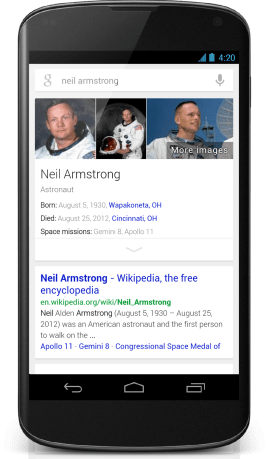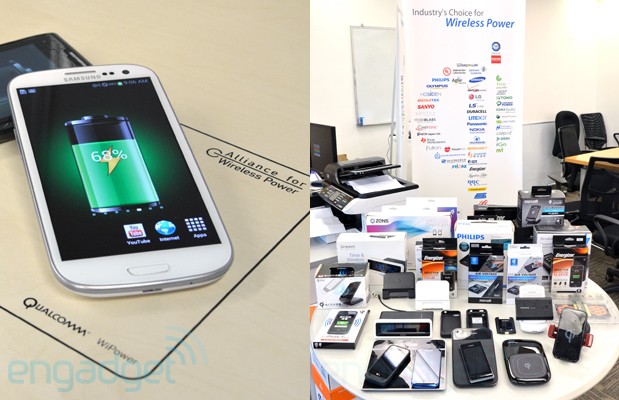Monday, September 30. 2013
The $400 Deltaprintr Is A Cheap Way To Make Really Big 3D Prints
Via TechCrunch
-----

Another day, another 3D printer. This time we have a model that comes from SUNY Purchase College where they are working on a laser-cut, compact 3D printer that can make extra tall models simply by swapping out a few pieces.
The printer pumps out plastic at 100 microns, a more than acceptable resolution, and uses very few moving parts. You’ll notice that the print head rides up three rails. This would allow you to add longer bars or extensions to bring things bigger than the platform.
Created by students Shai Schechter, Andrey Kovalev, Yasick Nemenov and Eugene Sokolov, the project is currently in pre-beta and they aim to launch a crowdfunding campaign in November. You can sign up for updates here.
The team hopes to make the product completely open source and because it uses very few expensive parts they’re able to price it very aggressively. While I love projects like these, I’m anxious to see how they build their software – one of the most important parts of a 3D printing package. As long as it’s solid I’d totally be down with this cool rig.
Saturday, September 28. 2013
Google Improves Knowledge Graph With Comparisons And Filters, Brings Cards & Cross-Platform Notifications To Mobile
Via TechCrunch
-----
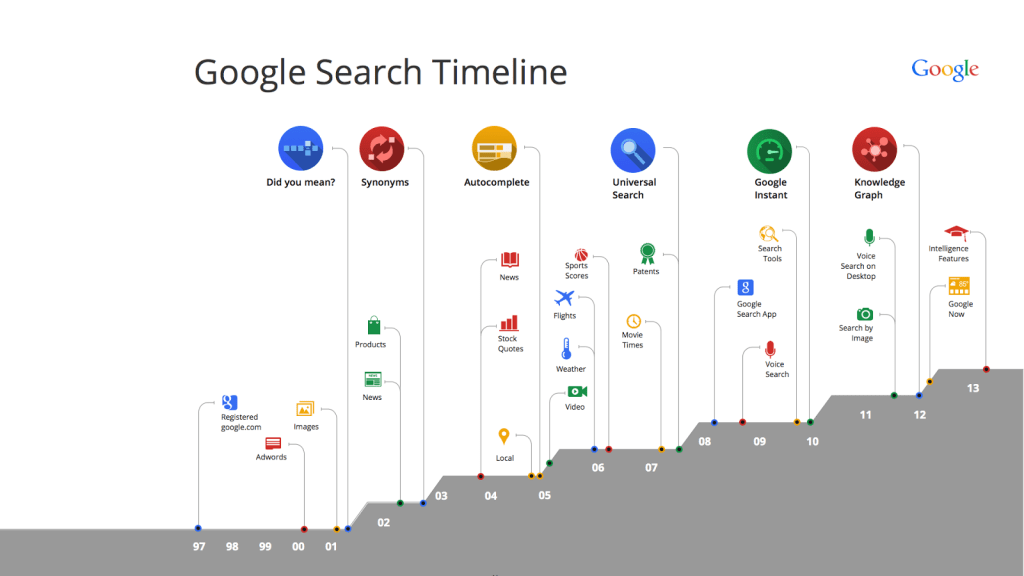
Google is turning 15 tomorrow and, fittingly, it’s celebrating the occasion by announcing a couple of new features for Google Search. The mobile search interface, for example, is about to get a bit of a redesign with results that are clustered on cards “so you can focus on the answers you’re looking for.”
Those answers, Google today announced, are also getting better. Thanks to its Knowledge Graph, the company continues to push to give users answers instead of just links, and with today’s update, it’s now featuring the ability to use the Knowledge Graph to compare things. If you want to compare the nutritional value of olive oil to butter, for example, Google Search will now give you a comparison chart with lots of details. The same holds true for other things, including dog breed and celestial objects. Google says it plans to expand this feature to more things over time.
Also new in this update is the ability to use Knowledge Graph to filter results. Say you ask Google: “Tell me about Impressionist artists.” Now, you’ll see who these artists are, and a new bar on top of the results will allow you dive in to learn more about them and to switch to learn more about abstract art, for example.
On mobile, Google is now making it easier to use your voice to set reminders and have those synced between devices. So you can say “Ok Google, Remind me to buy butter at Safeway” on your Nexus tablet and when you walk into the store with your iPhone, you’ll get that reminder. To enable this, Google will roll out a new version of its Search app for iPhone and iPad in the next few weeks.
With regard to notifications, it’s also worth noting that Google is now adding Google Now push notifications to its iPhone app, which will finally make Google Now useful on Apple’s platform.
Monday, September 23. 2013
Qualcomm joins Wireless Power Consortium board, sparks hope for A4WP and Qi unification
Via endgadget
-----
Qualcomm, the founding member of Alliance for Wireless Power (or A4WP in short), made a surprise move today by joining the management board of the rival Wireless Power Consortium (or WPC), the group behind the already commercially available Qi standard. This is quite an interesting development considering how both alliances have been openly critical of each other, and yet now there's a chance of seeing just one standard getting the best of both worlds. That is, of course, dependent on Qualcomm's real intentions behind joining the WPC.
While Qi is now a well-established ecosystem backed by 172 companies, its current "first-gen" inductive charging method is somewhat sensitive to the alignment of the devices on the charging mats (though there has been recent breakthrough). Another issue is Qi can currently provide just up to 5W of power (which is dependent on both the quality of the coil and the operating frequency), and this may not be sufficient for charging up large devices at a reasonable pace. For instance, even with the 10W USB adapter, the iPad takes hours to fully juice up, let alone with just half of that power.
Looking ahead, both the WPC and the 63-strong A4WP are already working on their own magnetic resonance implementations to enable longer range charging. Additionally, A4WP's standard has also been approved for up to 24W of output, whereas the WPC is already developing medium power (from 15W) Qi specification for the likes of laptops and power tools.
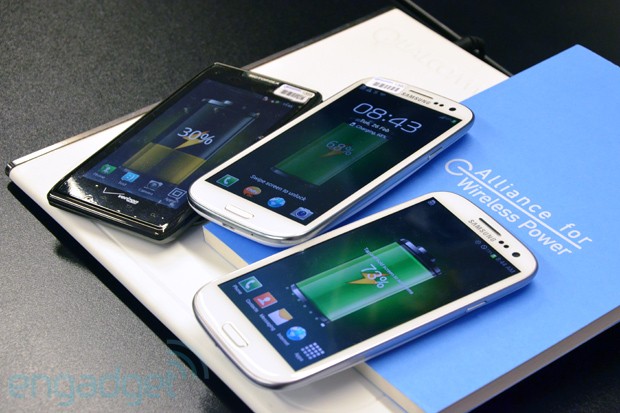
Here's where the two standards differentiate. A4WP's implementation allows simultaneous charging of devices that require different power requirement on the same pad, thus offering more spacial freedom. On the other hand, Qi follows a one-to-one control design to maximize efficiency -- as in the power transfer is totally dependent on how much juice the device needs, and it can even go completely off once the device is charged.
What remains unclear is whether Qualcomm has other motives behind its participation in the WPC's board of management. While the WPC folks "encourage competitors to join" for the sake of "open development of Qi," this could also hamper the development of their new standard. Late last year, we spoke to the WPC's co-chair Camille Tang (the name "Qi" was actually her idea; plus she's also the president and co-founder of Hong Kong-based Convenient Power), and she expressed concern over the potential disruption from the new wireless power groups.
"The question to ask is: why are all these groups now coming out and saying they're doing a standard? It's possible that some people might say they really are a standard, but they may actually not intend to put products out there," said Tang.
"For example, there's one company with their technology and one thing that's rolling out in infrastructure. They don't have any devices, it's not compatible with anything else, so you think: why do they do that?
"It's about money. Not just licensing money, but other types of money as well."
At least on the surface, Qualcomm is showing its keen side to get things going for everyone's best interest. In a statement we received from a spokesperson earlier, the company implied that joining the WPC's board is "the logical step to grow the wireless power industry beyond the current first generation products and towards next generation, loosely coupled technology." However, Qualcomm still "believes the A4WP represents the most mature and best implementation of resonant charging."
Saturday, September 21. 2013
Hackers are crowd-funding a bounty to hack the iPhone 5S fingerprint scanner
Via o.canada.com
-----

The 5S features a fingerprint sensor, has an upgraded camera, and contains an A7 chip Photo: Justin Sullivan/Getty Images
Hackers from around the world have put together more than $15,000 they hope will be enough to entice the smartest hackers to break into the new iPhone’s much-lauded fingerprint scanner.
The iPhone 5S, which was announced last week, features a fingerprint scanner to unlock the device and make purchases. Apple has said that an image of the fingerprint is not stored on the device, but only the data to recognize the fingerprint when it is pressed on the sensor.
Security experts quickly grew suspicious after the product was annouced, though. It is, after all, far easier to change a compromised password than a compromised fingerprint if the data were to get into the wrong hands.
To test Apple’s security claims, hackers are taking the challenge global.
The campaign is being run through IsTouchIdHackedYet.com, where individuals can put up their own money to reward the winner of the challenge.
The amount currently being offered is in excess of $15,000.
To win the prize, someone must be able to demonstrate that they:
- Can lift a fingerprint from the iPhone 5S
- Reproduces the fingerprint
- Use the reproduced fingerprint to unlock the iPhone 5S in fewer than 5 attempts
It’s no small challenge.
Apple says the information gathered by the phone is not an image of the fingerprint but an encrypted pile of data points that describe the fingerprint. They’ve also said that the information is stored deep within the phone and will be extremely difficult for anyone, including Apple, to access. They’ve also said that the fingerprint data will not be transmitted from the phone in any capacity.
This effectively means that winners of the prize will most likely try to dust the phone itself for fingerprints and try to replicate the finger by creating some kind of physical caste of the print to be used on the scanner.
The bounty is described in greater detail here.
If they succeed, it will be an enormous black eye for Apple, which is very proud of the security of its products.
If the hackers fail, it will be a feather in Apple’s cap that their flagship mobile device could not be foiled.
En-guard.
Friday, September 20. 2013
Kinect - Updated SDK, with HTML5, Kinect Fusion improvements, and more
Via Kinect Blog
-----
I am pleased to announce that we released the Kinect for Windows software development kit (SDK) 1.8 today. This is the fourth update to the SDK since we first released it commercially one and a half years ago. Since then, we’ve seen numerous companies using Kinect for Windows worldwide, and more than 700,000 downloads of our SDK.
We build each version of the SDK with our customers in mind—listening to what the developer community and business leaders tell us they want and traveling around the globe to see what these dedicated teams do, how they do it, and what they most need out of our software development kit.

The new background removal API is useful for advertising, augmented reality gaming, training
and simulation, and more.
Kinect for Windows SDK 1.8 includes some key features and samples that the community has been asking for, including:
- New background removal. An API removes the background behind the active user so that it can be replaced with an artificial background. This green-screening effect was one of the top requests we’re heard in recent months. It is especially useful for advertising, augmented reality gaming, training and simulation, and other immersive experiences that place the user in a different virtual environment.
- Realistic color capture with Kinect Fusion. A new Kinect Fusion API scans the color of the scene along with the depth information so that it can capture the color of the object along with its three-dimensional (3D) model. The API also produces a texture map for the mesh created from the scan. This feature provides a full fidelity 3D model of a scan, including color, which can be used for full color 3D printing or to create accurate 3D assets for games, CAD, and other applications.
- Improved tracking robustness with Kinect Fusion. This algorithm makes it easier to scan a scene. With this update, Kinect Fusion is better able to maintain its lock on the scene as the camera position moves, yielding a more reliable and consistent scanning.
- HTML interaction sample. This sample demonstrates implementing Kinect-enabled buttons, simple user engagement, and the use of a background removal stream in HTML5. It allows developers to use HTML5 and JavaScript to implement Kinect-enabled user interfaces, which was not possible previously—making it easier for developers to work in whatever programming languages they prefer and integrate Kinect for Windows into their existing solutions.
- Multiple-sensor Kinect Fusion sample. This sample shows developers how to use two sensors simultaneously to scan a person or object from both sides—making it possible to construct a 3D model without having to move the sensor or the object! It demonstrates the calibration between two Kinect for Windows sensors, and how to use Kinect Fusion APIs with multiple depth snapshots. It is ideal for retail experiences and other public kiosks that do not include having an attendant available to scan by hand.
- Adaptive UI sample. This sample demonstrates how to build an application that adapts itself depending on the distance between the user and the screen—from gesturing at a distance to touching a touchscreen. The algorithm in this sample uses the physical dimensions and positions of the screen and sensor to determine the best ergonomic position on the screen for touch controls as well as ways the UI can adapt as the user approaches the screen or moves further away from it. As a result, the touch interface and visual display adapt to the user’s position and height, which enables users to interact with large touch screen displays comfortably. The display can also be adapted for more than one user.
We also have updated our Human Interface Guidelines (HIG) with guidance to complement the new Adaptive UI sample, including the following:

Design a transition that reveals or hides additional information
without obscuring the anchor points in the overall UI.
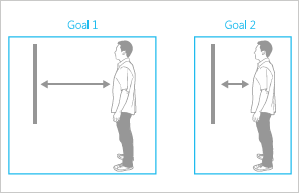
Design UI where users can accomplish all tasks for each goal
within a single range.
My team and I believe that communicating naturally with computers means being able to gesture and speak, just like you do when communicating with people. We believe this is important to the evolution of computing, and are committed to helping this future come faster by giving our customers the tools they need to build truly innovative solutions. There are many exciting applications being created with Kinect for Windows, and we hope these new features will make those applications better and easier to build. Keep up the great work, and keep us posted!
Bob Heddle, Director
Kinect for Windows
Key links
- Download Kinect for Windows SDK 1.8
- Download Kinect for Windows Toolkit 1.8
- Download Kinect for Windows Runtime 1.8
- Find out more about Kinect for Windows
- See what others are doing with Kinect for Windows
- Read what people are saying about Kinect for Windows
- Tell us about your solutions on Facebook and Twitter
- Kinect for Windows Human Interface Guidelines (PDF, 14.4 MB)
- FAQ
Monday, September 09. 2013
Why cards are the future of the web
-----
Cards are fast becoming the best design pattern for mobile devices.
We are currently witnessing a re-architecture of the web, away from pages and destinations, towards completely personalised experiences built on an aggregation of many individual pieces of content. Content being broken down into individual components and re-aggregated is the result of the rise of mobile technologies, billions of screens of all shapes and sizes, and unprecedented access to data from all kinds of sources through APIs and SDKs. This is driving the web away from many pages of content linked together, towards individual pieces of content aggregated together into one experience.

The aggregation depends on:
- The person consuming the content and their interests, preferences, behaviour.
- Their location and environmental context.
- Their friends’ interests, preferences and behaviour.
- The targeting advertising eco-system.
If the predominant medium of our time is set to be the portable screen (think phones and tablets), then the predominant design pattern is set to be cards. The signs are already here…
Twitter is moving to cards
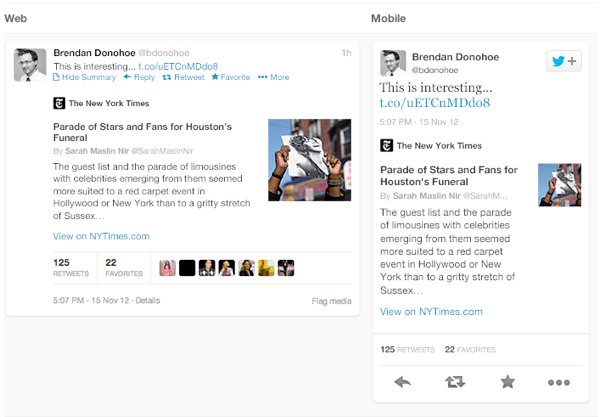
Twitter recently launched Cards, a way to attached multimedia inline with tweets. Now the NYT should care more about how their story appears on the Twitter card (right hand in image above) than on their own web properties, because the likelihood is that the content will be seen more often in card format.
Google is moving to cards

With Google Now, Google is rethinking information distribution, away from search, to personalised information pushed to mobile devices. Their design pattern for this is cards.
Everyone is moving to cards

Pinterest (above left) is built around cards. The new Discover feature on Spotify (above right) is built around cards. Much of Facebook now represents cards. Many parts of iOS7 are now card based, for example the app switcher and Airdrop.
The list goes on. The most exciting thing is that despite these many early card based designs, I think we’re only getting started. Cards are an incredible design pattern, and they have been around for a long time.
Cards give bursts of information
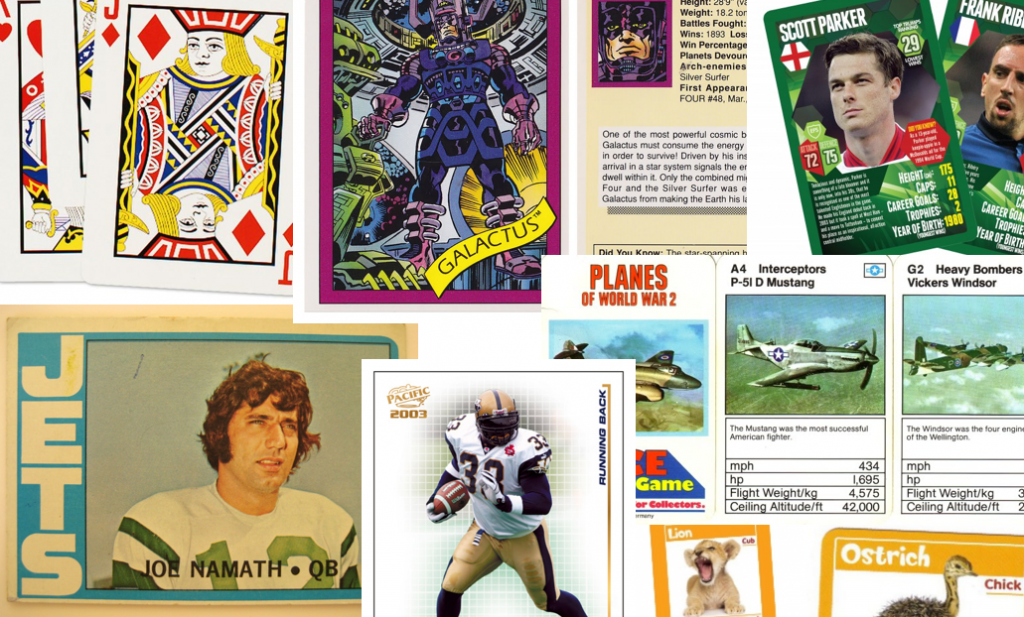
Cards as an information dissemination medium have been around for a very long time. Imperial China used them in the 9th century for games. Trade cards in 17th century London helped people find businesses. In 18th century Europe footmen of aristocrats used cards to introduce the impending arrival of the distinguished guest. For hundreds of years people have handed around business cards.
We send birthday cards, greeting cards. My wallet is full of debit cards, credit cards, my driving licence card. During my childhood, I was surrounded by games with cards. Top Trumps, Pokemon, Panini sticker albums and swapsies. Monopoly, Cluedo, Trivial Pursuit. Before computer technology, air traffic controllers used cards to manage the planes in the sky. Some still do.
Cards are a great medium for communicating quick stories. Indeed the great (and terrible) films of our time are all storyboarded using a card like format. Each card representing a scene. Card, Card, Card. Telling the story. Think about flipping through printed photos, each photo telling it’s own little tale. When we travelled we sent back postcards.
What about commerce? Cards are the predominant pattern for coupons. Remember cutting out the corner of the breakfast cereal box? Or being handed coupon cards as you walk through a shopping mall? Circulars, sent out to hundreds of millions of people every week are a full page aggregation of many individual cards. People cut them out and stick them to their fridge for later.
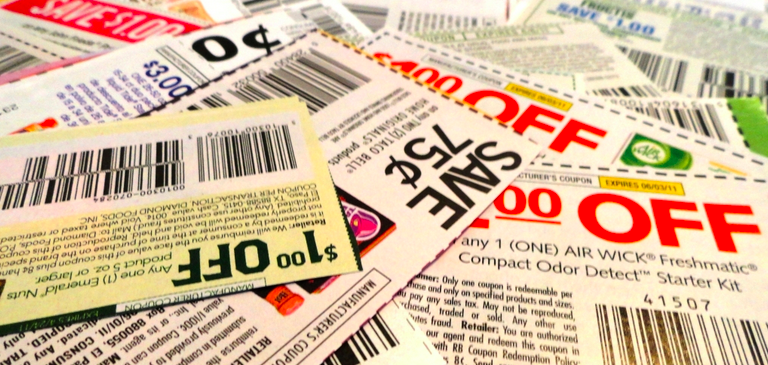
Cards can be manipulated.

In addition to their reputable past as an information medium, the most important thing about cards is that they are almost infinitely manipulatable. See the simple example above from Samuel Couto Think about cards in the physical world. They can be turned over to reveal more, folded for a summary and expanded for more details, stacked to save space, sorted, grouped, and spread out to survey more than one.
When designing for screens, we can take advantage of all these things. In addition, we can take advantage of animation and movement. We can hint at what is on the reverse, or that the card can be folded out. We can embed multimedia content, photos, videos, music. There are so many new things to invent here.
Cards are perfect for mobile devices and varying screen sizes. Remember, mobile devices are the heart and soul of the future of your business, no matter who you are and what you do. On mobile devices, cards can be stacked vertically, like an activity stream on a phone. They can be stacked horizontally, adding a column as a tablet is turned 90 degrees. They can be a fixed or variable height.
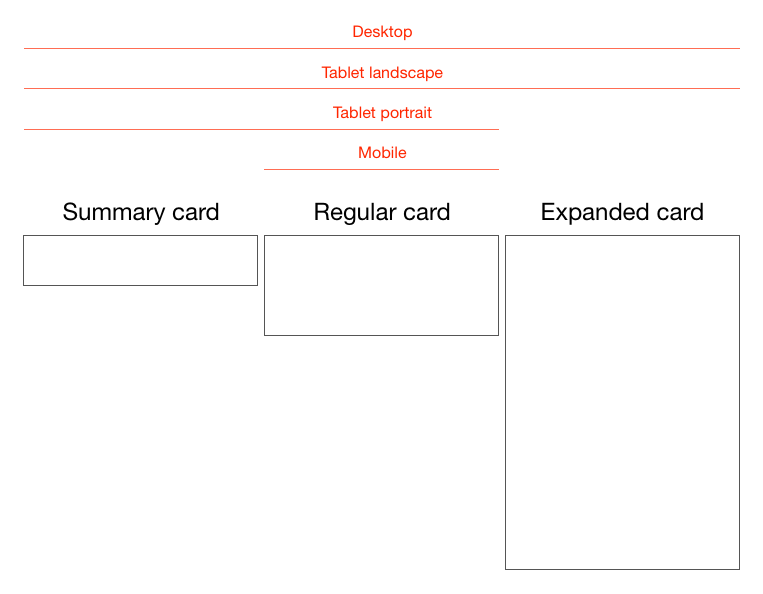
Cards are the new creative canvas
It’s already clear that product and interaction designers will heavily use cards. I think the same is true for marketers and creatives in advertising. As social media continues to rise, and continues to fragment into many services, taking up more and more of our time, marketing dollars will inevitably follow. The consistent thread through these services, the predominant canvas for creativity, will be card based. Content consumption on Facebook, Twitter, Pinterest, Instagram, Line, you name it, is all built on the card design metaphor.
I think there is no getting away from it. Cards are the next big thing in design and the creative arts. To me that’s incredibly exciting.
Thursday, September 05. 2013
MakerBot Digitizer 3D scanner arrives for reverse 3D printing
Via Slash Gear
-----
MakerBot is best known for its 3D printers, turning virtual products into real ones, but the company’s latest hardware to go on sale, the MakerBot Digitizer, takes things in the opposite direction. Announced back in March, and on sale from today for $1,400, the Digitizer takes a real-world object and, by spinning it on a rotating platform in front of a camera, maps out a digital model that can then be saved, shared, modified, and even 3D printed itself.
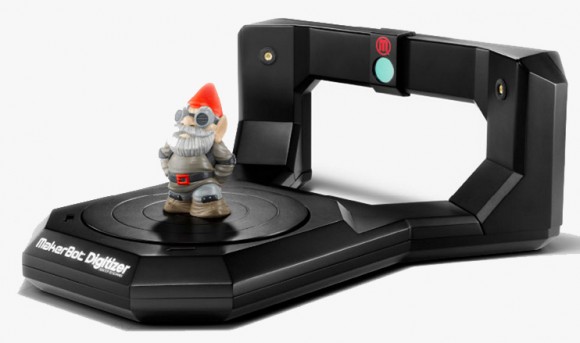
Although the process itself involves some complicated technology and data-crunching, MakerBot claims that users themselves should be able to scan in an object in just a couple of clicks. The company includes its own MakerWare for Digitizer software, which creates files suitable for both the firm’s own 3D printers and generic 3D files for other hardware.
Calibration is a matter of dropping the included glyph block on the rotating platter and having the camera run through some preconfigured tests. After that, you center the object you’re hoping to scan, selecting whether they’re lightly colored, medium, or dark, and then waiting until the process is done.
MakerBot Digitizer Desktop 3D Scanner overview:
That takes approximately twelve minutes per object, MakerBot says, so don’t think of this as the 3D scanner equivalent of a photocopier. The camera itself runs at 1.3-megapixels and is paired with two Class 1 lasers for mapping out objects, and the overall resolution is good for 0.5mm in terms of detail and +/- 2.0mm for dimensional accuracy. Maximum object size is up to 20.3cm in diameter and the same in height.

Once you’ve actually run something through the scanner, the core grid file can be shared directly from the app to Thingiverse.com, or edited and combined with other 3D files to make a new object altogether.
The MakerBot Digitizer Desktop Scanner is available for order now, priced at $1,400.
Microsoft hints that Kinect camera technology is coming to Windows Phone
Via The Inquirer
-----

GAMES CONSOLE AND PHONE MAKER Microsoft has hinted that it will bring its Xbox Kinect camera technology to its Windows Phone 8 mobile operating system following its acquisition of Nokia.
During a conference call on Tuesday, Microsoft operating systems group VP Terry Myerson hinted that the firm will work with Nokia to integrated Kinect camera technology into future Windows Phone devices.
Speaking about the Nokia buyout, Myerson said, "In the area of imaging, the Nokia Lumia 1020 has no equal. We are excited to bring this together with our Kinect camera technology to delight our customers."
Myerson didn't elaborate further, so it's unclear when Microsoft will introduce this technology and what it will be capable of doing.
However, this isn't the first we've heard about Kinect technology possibly coming to Windows Phone devices. Previous rumours had speculated that the integration will allow users of Windows Phone devices to control their handsets using both voice and gestures.
It's possible that the Kinect integration could also enable more immersive gaming on Windows Phone devices and facilitate deeper integration with Microsoft's Xbox One games console.
While all this sounds promising, Kinect integration could also be a bad thing for the Windows Phone ecosystem, with Microsoft having been accused of spying on its users with Kinect in the wake of recent NSA surveillance revelations.
Microsoft announced its acquisition of Nokia's devices business as well as licensing of the Finnish phone firm's patent portfolio for a cool £4.6bn on Tuesday morning. The buyout deal is expected to be completed in 2014.Wednesday, September 04. 2013
The wireless network with a mile-wide range that the “internet of things” could be built on
Via quartz
-----

Robotics engineer Taylor Alexander needed to lift a nuclear cooling tower off its foundation using 19 high-strength steel cables, and the Android app that was supposed to accomplish it, for which he’d just paid a developer $20,000, was essentially worthless. Undaunted and on deadline—the tower needed a new foundation, and delays meant millions of dollars in losses—he re-wrote the app himself. That’s when he discovered just how hard it is to connect to sensors via the standard long-distance industrial wireless protocol, known as Zigbee.
It took him months of hacking just to create a system that could send him a single number—which represented the strain on each of the cables—from the sensors he was using. Surely, he thought, there must be a better way. And that’s when he realized that the solution to his problem would also unlock the potential of what’s known as the “internet of things” (the idea that every object we own, no matter how mundane, is connected to the internet and can be monitored and manipulated via the internet, whether it’s a toaster, a lightbulb or your car).
The result is an in-the-works project called Flutter. It’s what Taylor calls a “second network”—an alternative to Wi-Fi that can cover 100 times as great an area, with a range of 3,200 feet, using relatively little power, and is either the future of the way that all our connected devices will talk to each other or a reasonable prototype for it.

“We have Wi-Fi in our homes, but it’s not a good network for our things,” says Taylor. Wi-Fi was designed for applications that require fast connections, like streaming video, but it’s vulnerable to interference and has a limited range—often, not enough even to cover an entire house.
For applications with a very limited range—for example anything on your body that you might want to connect with your smartphone—Bluetooth, the wireless protocol used by keyboards and smart watches, is good enough. For industrial applications, the Zigbee standard has been in use for at least a decade. But there are two problems with Zigbee: the first is that, as Alexander discovered, it’s difficult to use. The second is that the Zigbee devices are not open source, which makes them difficult to integrate with the sort of projects that hardware startups might want to create.
Flutter’s nearest competitors, Spark Core and Electric Imp, both use Wi-Fi, which limits their usability to home-bound projects like adding your eggs to the internet of things and klaxons that tell you when your favorite Canadian hockey team has scored a goal.
Flutter’s other differentiator is cost; a Flutter radio costs just $20,
which still allows Taylor a healthy margin above the $6 in parts that
comprise the Flutter.
Making Flutter cheap means that hobbyists can connect that many more devices—say, all the lights in a room, or temperature and moisture sensors in a greenhouse. No one is quite sure what the internet of things will lead to because the enabling technologies, including cheap wireless radios like Flutter, have yet to become widespread. The present day internet of things is a bit like where personal computers were around the time Steve Wozniak and Steve Jobs were showing off their Apple I at the Palo Alto home-brew computer club: It’s mostly hobbyists, with a few big corporations sniffing around the periphery.

“I think the internet of things is not going to start with products, but projects,” says Taylor. His goal is to use the current crowd-funding effort for Flutter to pay for the coding of the software protocol that will run Flutter, since the microchips it uses are already available from manufacturers. The resulting software will allow Flutter to create a “mesh network,” which would allow individual Flutter radios to re-transmit data from any other Flutter radio that’s in range, potentially giving hobbyists or startups the ability to cover whole cities with networks of Flutter radios and their attached sensors.
Quicksearch
Popular Entries
- The great Ars Android interface shootout (130673)
- Norton cyber crime study offers striking revenue loss statistics (100895)
- MeCam $49 flying camera concept follows you around, streams video to your phone (99679)
- Norton cyber crime study offers striking revenue loss statistics (57124)
- The PC inside your phone: A guide to the system-on-a-chip (56965)
